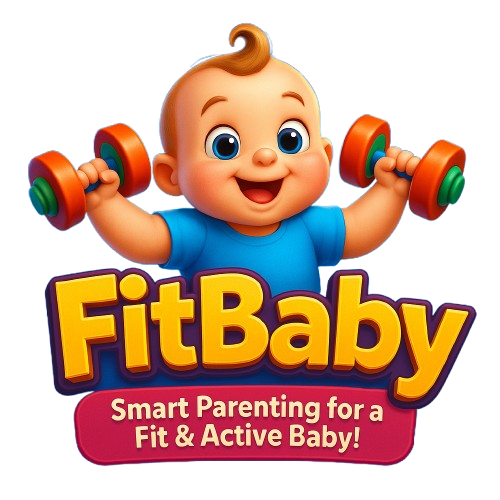Table of Contents
Introduction
The transition to solid foods marks one of the most exciting milestones in your baby’s first year. As a parent, you want to ensure this nutritional journey begins with the healthiest, safest, and most developmentally appropriate foods possible.

Recent studies show that 85% of parents introduce solids either too early or too late, potentially impacting their baby’s growth and eating habits. This evidence-based guide will help you navigate this important stage with confidence.
When Exactly Should You Start Solid Foods?
The World Health Organization (WHO) and American Academy of Pediatrics (AAP) agree:
✔️ 6 months is the ideal time to begin solid foods
✔️ Never before 4 months (digestive system isn’t ready)
✔️ Not after 7 months (may delay nutrient needs)

Key Readiness Signs:
- Can sit with minimal support
- Good head and neck control
- Shows interest in your food
- Opens mouth when food approaches
The Best First Solid Foods (Backed by Science)
Stage 1 (6-8 months):
- Iron-rich foods:
- Fortified baby cereal (mix with breastmilk)
- Pureed meats (beef, chicken)
- Vitamin-packed veggies:
- Sweet potatoes (high in Vitamin A)
- Peas (great plant-based iron)
- Easy-to-digest fruits:
- Mashed bananas (potassium)
- Steamed pears (gentle on tummy)

Pro Tip: Introduce potentially allergenic foods (peanuts, eggs) early (around 6 months) to help prevent allergies, under pediatric guidance.
Step-by-Step: Preparing Nutrient-Dense Solid Foods
1. Selecting Ingredients
- Organic when possible (especially for the “Dirty Dozen”)
- Fresh over frozen when available
- Seasonal produce for maximum nutrition
2. Cooking Methods That Preserve Nutrients
| Method | Best For | Nutrient Retention |
|---|---|---|
| Steaming | Carrots, broccoli | 90% nutrients kept |
| Baking | Sweet potatoes | 85% nutrients kept |
| Boiling | Pears, apples | 75% nutrients kept |
3. Texture Progression Timeline
- 6 months: Smooth purees (no lumps)
- 7-8 months: Thicker, mashed textures
- 9-10 months: Soft, finger-sized pieces
- 11-12 months: Chopped family foods

Common Solid Food Mistakes to Avoid
🚫 Using only fruits (can create sweet preference)
🚫 Adding salt/sugar (harmful to kidneys)
🚫 Giving honey before 1 year (botulism risk)
🚫 Offering choking hazards (whole grapes, nuts)
Did You Know? Babies may need 8-15 exposures to a new food before accepting it. Don’t give up after 2-3 tries!
Homemade vs. Store-Bought: The Real Truth
Homemade Solid Foods Win Because:
✅ Higher nutrient density (no processing losses)
✅ Better flavor variety (prevents picky eating)
✅ Cost savings (up to 50% cheaper)
✅ No additives/preservatives

When Store-Bought Makes Sense:
- Traveling
- Emergencies
- Certain hard-to-prepare foods
Expert-Approved Feeding Schedule
Sample 6-8 Month Plan:
| Time | Meal |
|---|---|
| 7 AM | Breastmilk/formula |
| 10 AM | 2-3 tbsp iron-fortified cereal |
| 1 PM | 2 tbsp pureed chicken + sweet potato |
| 4 PM | Breastmilk/formula |
| 6 PM | 2 tbsp mashed banana + avocado |
| 7 PM | Breastmilk/formula |
Final Thoughts: Building Healthy Eating Habits
Introducing solid foods is about more than nutrition—it’s laying the foundation for lifelong healthy eating. By:
✔️ Offering variety early
✔️ Following baby’s hunger cues
✔️ Making mealtimes joyful
You’re setting your child up for optimal growth and a positive relationship with food.
Need personalized advice? Always consult your pediatrician about your baby’s unique solid food needs.

FAQ: Your Top Solid Food Questions Answered
1. When exactly should we start solid foods?
Most babies are ready around 6 months. Watch for these signs:
✓ Can sit with minimal support
✓ Shows interest in your food
✓ Lost the tongue-thrust reflex
2. What if my baby refuses solids?
This is completely normal! Try:
• Offering food when baby is slightly hungry but not starving
• Letting them touch/play with the food
• Trying again in a few days – it may take 10-15 attempts
3. How much should my 6-month-old eat?
Start small:
• Day 1-3: 1-2 teaspoons
• Week 2: 1-2 tablespoons
• By 8 months: 2-3 meals daily
4. Can I mix breastmilk with solids?
Absolutely! This helps:
✓ Maintain familiar taste
✓ Boost nutrition
✓ Create smoother textures
5. What about food allergies?
Introduce common allergens early (around 6 months):
• Peanut butter (thin with water)
• Eggs
• Dairy (yogurt)
Watch for reactions like hives or vomiting.
Discover the best baby foods for your little one – click below to shop our top recommendations!

